Mass is about to start when I arrive at the Todos los Santos church on Heping Island (和平島). Clad in bright red robes, the priest has set up a makeshift altar in the center of the complex, while the parishioners sit on the ground.
Built in 1626 by Spanish missionaries, the main structure is long gone, and the stone foundations and buttresses on display were only discovered underneath a parking lot in 2011. A 3D recreation of the building can be viewed through a cell phone AR app.
Considered Taiwan’s earliest Catholic church, Todos los Santos seems to have become a site of pilgrimage since it opened to the public in June. Visitors are especially excited about the Spanish-style Caravaca cross that was found on one of the many skeletons buried here, and the display notes aside from European artifacts, Neolithic pottery, indigenous jewelry and Chinese porcelain have also been unearthed. There’s even a Japanese-era brick septic tank.
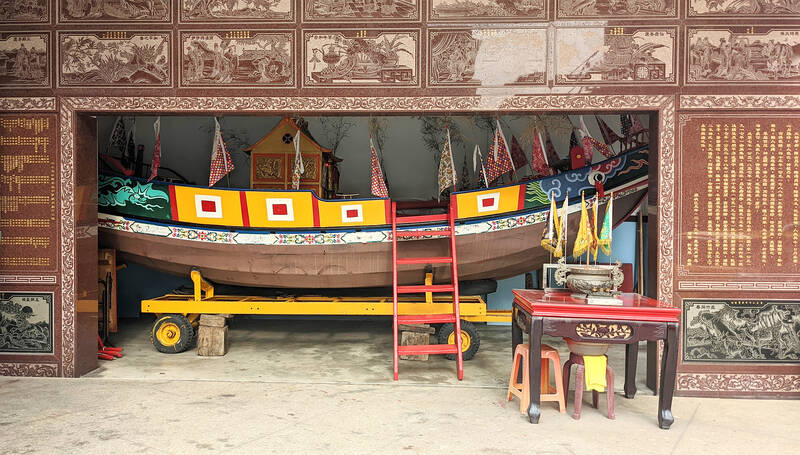
Photo: Han Cheung, Taipei Times
I had no idea that there would be a church service there, but I did come mainly for the ruins. I’ve visited Heping Island, just off the coast of Keelung, numerous times in the past — and wrote a feature about it in 2015 — but every time, I’ve gone straight to Heping Island Park, famous for its other-worldly rock formations and stunning ocean views.
Since the church lies outside the park, I decide to skip the park altogether and explore the rest of the sleepy island on foot. The winding streets with faded old buildings and colorful temples are quite pleasant to stroll through, while lumbering shipyard structures by the coast make for a picturesque contrast. While the park is definitely the area’s star attraction, it’s rewarding to just step out to where people still live and dive into the area’s rich past.
LAYERS OF HISTORY
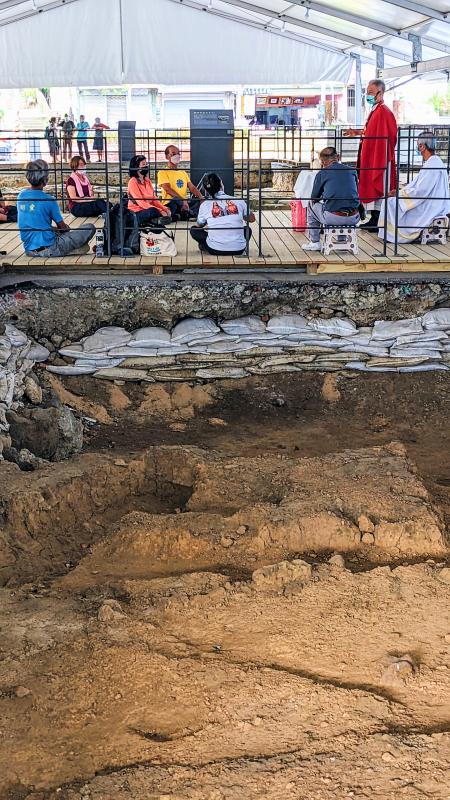
Photo: Han Cheung, Taipei Times
I hop off the bus at the bridge leading to the island. There’s a steady stream of tourists taking selfies of rainbow-colored houses at Zhengbin Harbor (正濱漁港), which is worth checking out if you have time, but I head in the opposite direction toward the decaying ruins of the Agenna Shipyard. I remember climbing onto these eerie reinforced concrete beams years ago, but now the site is sealed off — probably for good reason.
On the other side of the bridge is a row of seafood restaurants, and there are plenty of eateries and convenience stores on the island.
The church ruins are a short walk from the bridge. The site is quite expansive, and what’s on display is just a third of the original complex. Researchers believe that the first structure was quite small; it was likely renovated and expanded after the Spanish found sources for stone in 1632 along the Tamsui River. When the Spanish were driven out of northern Taiwan by the Dutch in 1642, about 400 prisoners were briefly kept here, indicative of the structure’s size.
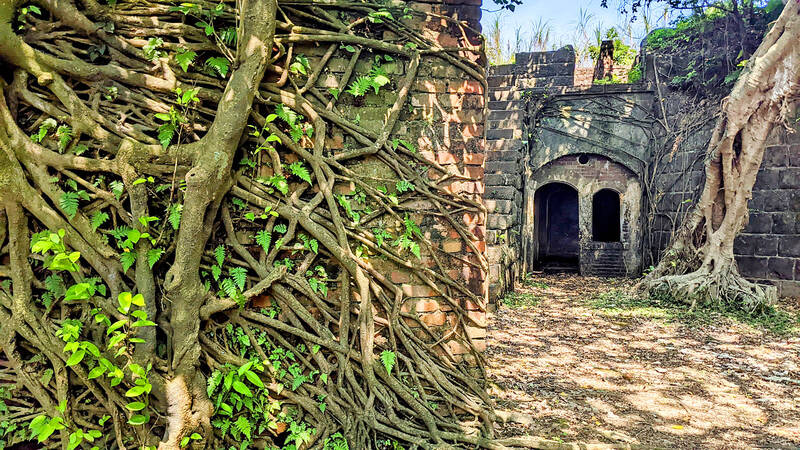
Photo: Han Cheung, Taipei Times
Little was known about the Spanish structures that once existed on the island when historian Jose Eugenio Borao Mateo arrived in 1989. He was originally trying to locate the fort built by Europeans, but the Taiwanese-Spanish archaeological team had trouble obtaining permission from CSBC Corp to excavate the site due to it being below their facilities. The shipbuilding company allowed them to dig in their parking lot, however, and using a 1654 map of the area, they discovered the church and adjacent Catholic cemetery.
Nearby is the 234-year-old Sheling Temple (社靈廟) dedicated to the Taoist Wangye deity (王爺). Its colorful King Boat is displayed in front of the building, and unlike most King Boat rituals across Taiwan, this vessel is not burned; instead it makes an annual pilgrimage to various fishing ports in the area.
GOOD VISTAS
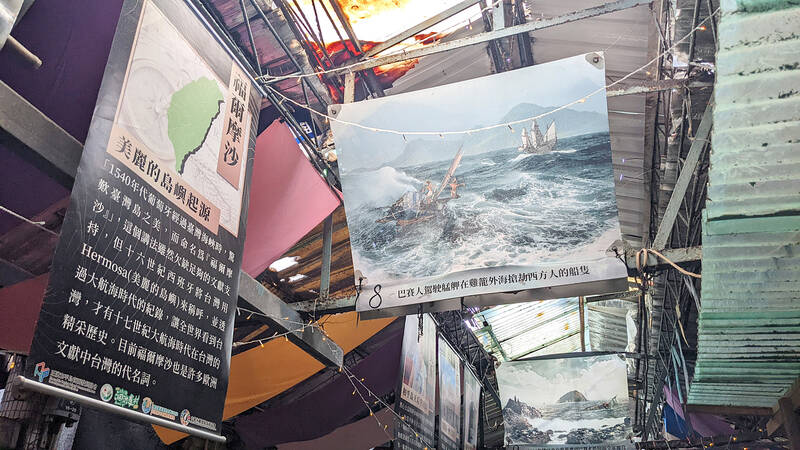
Photo: Han Cheung, Taipei Times
The covered, one-street Heping Market contains a “historic corridor” of drawings and photographs depicting the island’s past, starting from when the indigenous Basay people arrived in the area thousands of years ago as traders. They had advanced seafaring skills, and one image shows them raiding European ships. The hanging displays are double-sided, so viewers have to walk to the end and back.
There were already Han Taiwanese settlers on the island by the early 1600s, and this corridor was one of their main streets. Spanish records refer to it as “Parian,” their word for Chinese quarters in the Philippines. These early settlers brought deities of the sea goddess Matsu (媽祖) with them for protection against pirates, and in 1747 the Tianhou Temple was built to honor her. The grand, three-story structure housing the deity today is not the original temple, which was mostly destroyed by the Japanese in 1937 to build a road. The remnants were moved to the current site in 1949.
The shipyard along the adjacent shore seems abandoned at first glance, with partially hollowed-out brick buildings and rusting ships, but there’s still activity going on at both ends. It’s quite atmospheric, with great views of the harbor.
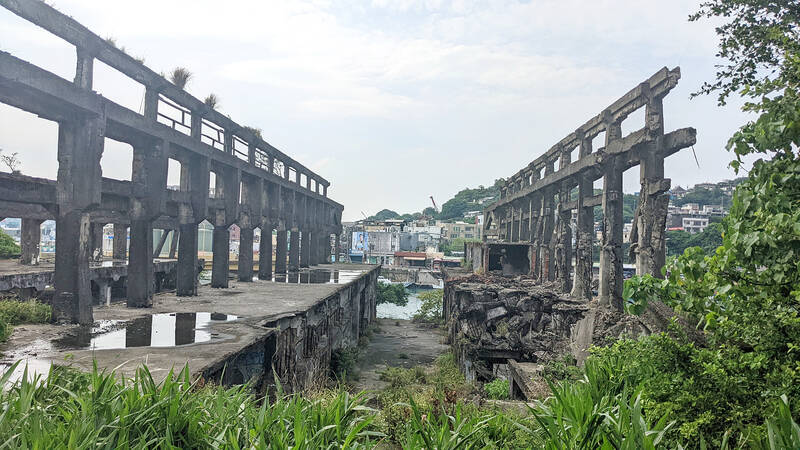
Photo: Han Cheung, Taipei Times
For even better vistas, I climb a hill up to Tianxian Temple (天顯宮), which is a sprawling Buddhist and Taoist complex with multiple levels and halls of worship. Much of the place, including the main shrine, is under renovation.
Visitors are greeted by two rows of Buddhist Arhat sculptures that are numbered; usually there are 18 of them, but here they continue down a meandering slope in dizzying succession until I reach the 500th one in a garden at the bottom of the compound. They seem to be quite new, with construction tools still scattered around the grounds, but the sheer number of them makes for an impressive scene. There’s a forest path that continues down the hill, but there’s not much to see besides some not-so-friendly dogs at the end of it.
RECLAIMED BY NATURE
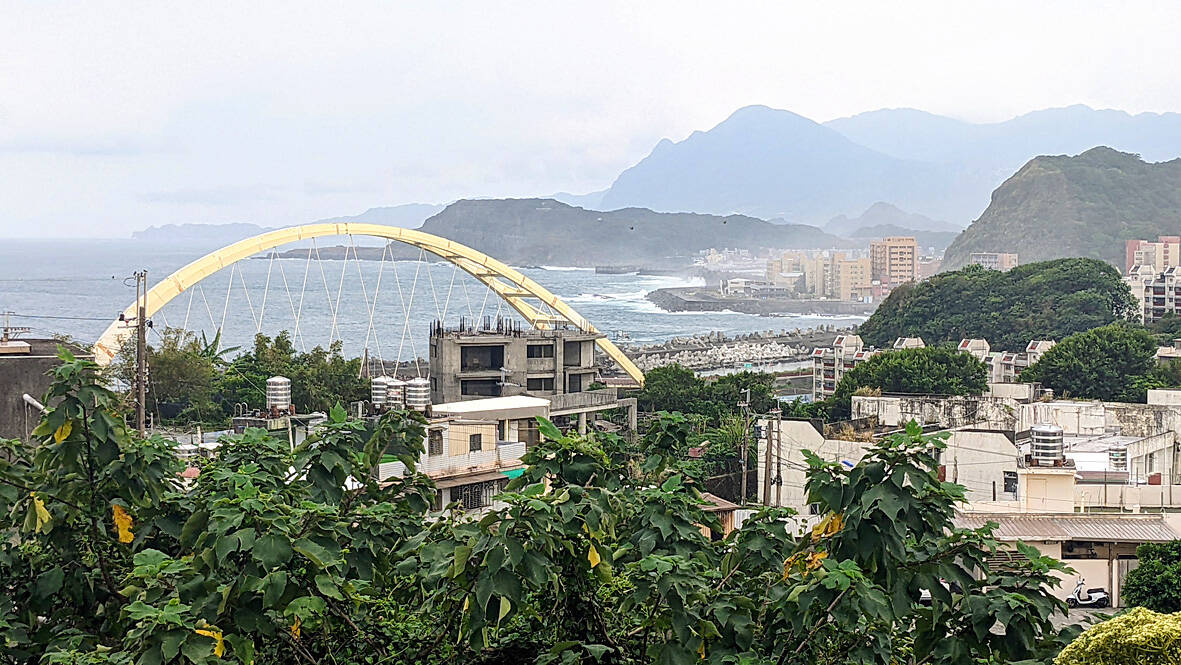
Photo: Han Cheung, Taipei Times
My last stop is the Sheliao East Fort (社寮東砲台), which was first built by the Spanish shortly after their arrival and maintained by the Dutch. The cannons were added by the Qing in the 1890s in response to the 1884 French invasion of Keelung and upgraded several times under the Japanese.
On the way is a marker noting the spot where the Spanish lost their final battle to the Dutch in 1642. Surprisingly, I hear people chatting in what sounds like Amis on the way up to the fort, and a woman carving betel nut trinkets tells me that this area was settled by indigenous workers from Hualien five decades ago.
Like the church ruins, the fort embodies the different layers of the island’s storied history, but now it’s just one of many touristy military structures, much of it reclaimed by vegetation and banyan tree roots. Judging from the cobwebs in the tunnels, people don’t come here that often.
The rock formations of the park can be partially seen from the top of the fort, but you’ll have to go all the way around to the main entrance to get in.

Enter the Dragon 13 will bring Taiwan’s first taste of Dirty Boxing Sunday at Taipei Gymnasium, one highlight of a mixed-rules card blending new formats with traditional MMA. The undercard starts at 10:30am, with the main card beginning at 4pm. Tickets are NT$1,200. Dirty Boxing is a US-born ruleset popularized by fighters Mike Perry and Jon Jones as an alternative to boxing. The format has gained traction overseas, with its inaugural championship streamed free to millions on YouTube, Facebook and Instagram. Taiwan’s version allows punches and elbows with clinch striking, but bans kicks, knees and takedowns. The rules are stricter than the
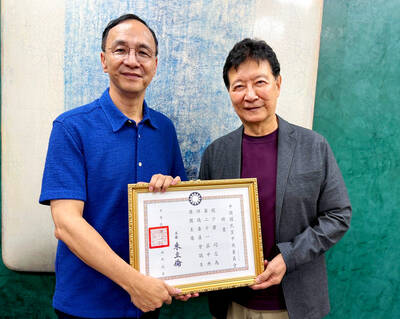
Next week, candidates will officially register to run for chair of the Chinese Nationalist Party (KMT). By the end of Friday, we will know who has registered for the Oct. 18 election. The number of declared candidates has been fluctuating daily. Some candidates registering may be disqualified, so the final list may be in flux for weeks. The list of likely candidates ranges from deep blue to deeper blue to deepest blue, bordering on red (pro-Chinese Communist Party, CCP). Unless current Chairman Eric Chu (朱立倫) can be convinced to run for re-election, the party looks likely to shift towards more hardline

“Far from being a rock or island … it turns out that the best metaphor to describe the human body is ‘sponge.’ We’re permeable,” write Rick Smith and Bruce Lourie in their book Slow Death By Rubber Duck: The Secret Danger of Everyday Things. While the permeability of our cells is key to being alive, it also means we absorb more potentially harmful substances than we realize. Studies have found a number of chemical residues in human breast milk, urine and water systems. Many of them are endocrine disruptors, which can interfere with the body’s natural hormones. “They can mimic, block
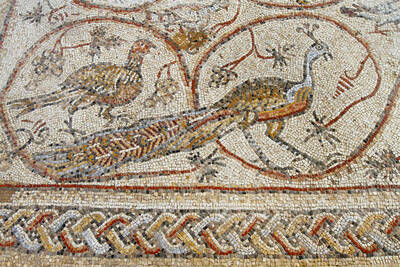
Nearly three decades of archaeological finds in Gaza were hurriedly evacuated Thursday from a Gaza City building threatened by an Israeli strike, said an official in charge of the antiquities. “This was a high-risk operation, carried out in an extremely dangerous context for everyone involved — a real last-minute rescue,” said Olivier Poquillon, director of the French Biblical and Archaeological School of Jerusalem (EBAF), whose storehouse housed the relics. On Wednesday morning, Israeli authorities ordered EBAF — one of the oldest academic institutions in the region — to evacuate its archaeological storehouse located on the ground floor of a residential tower in